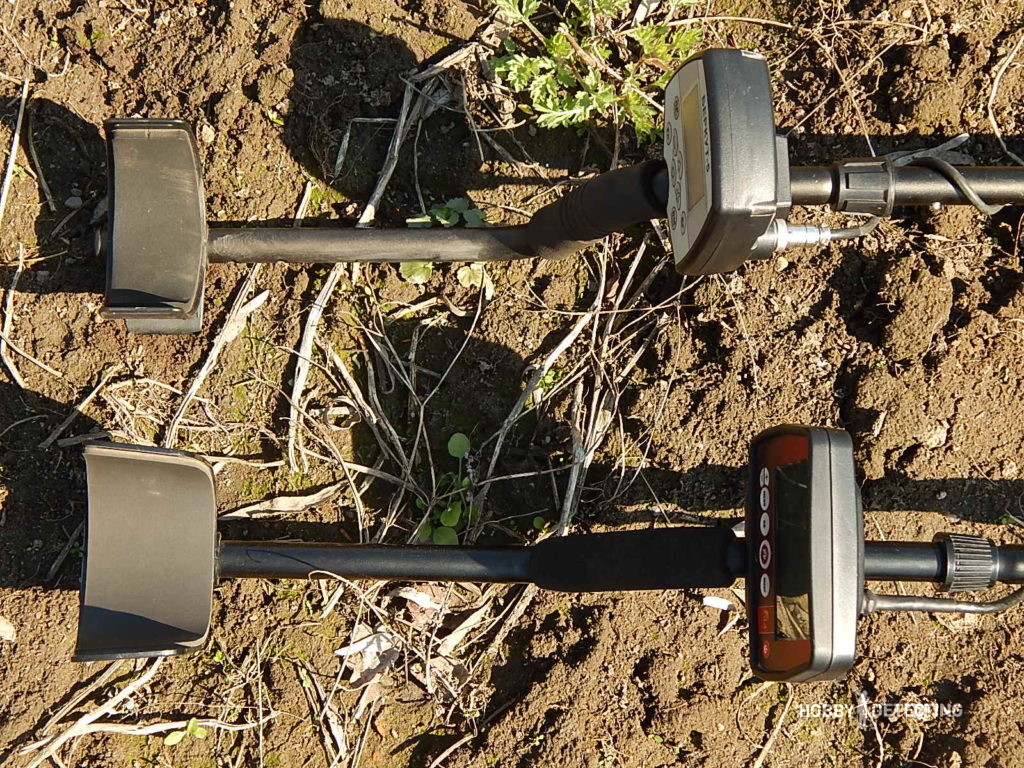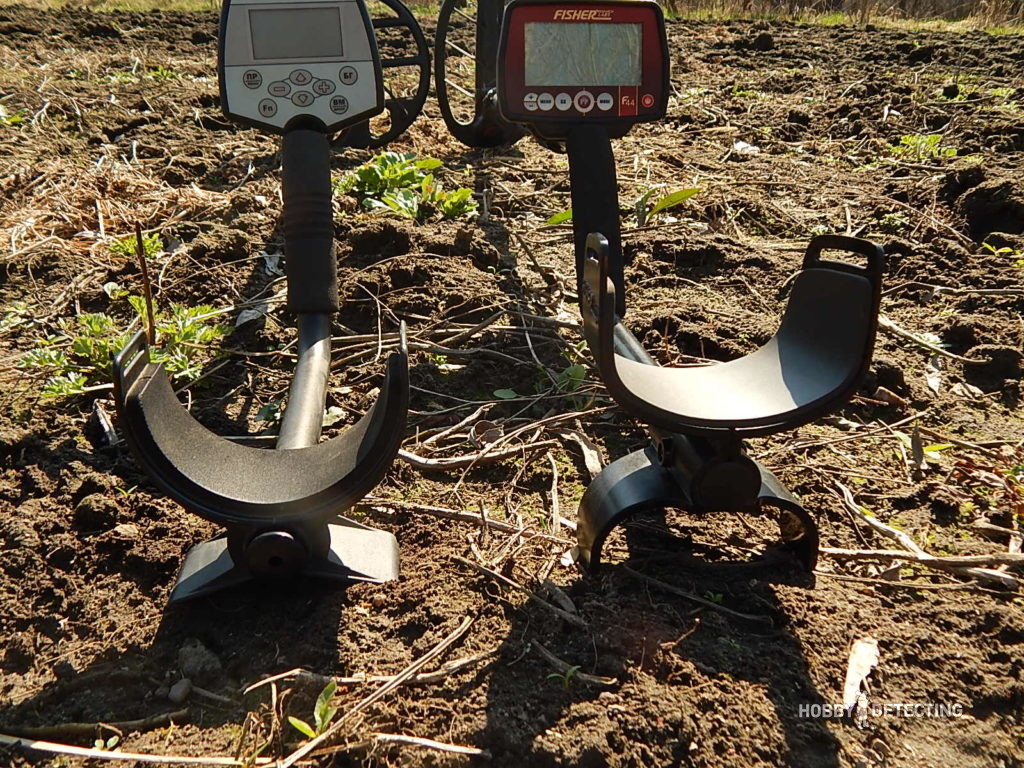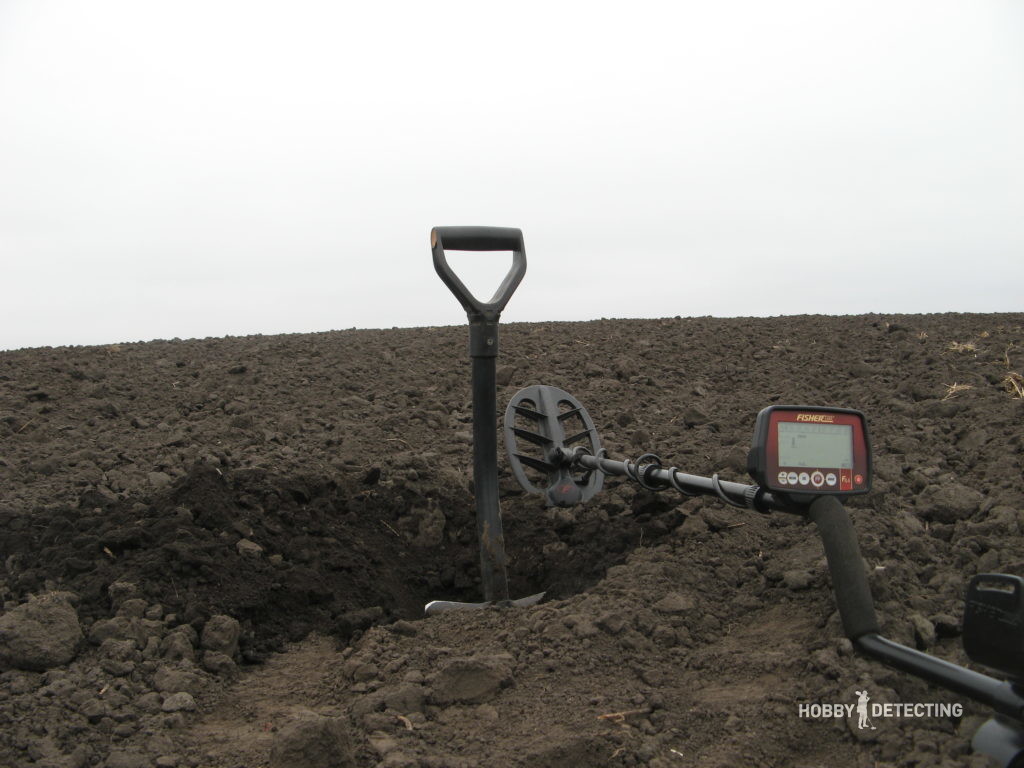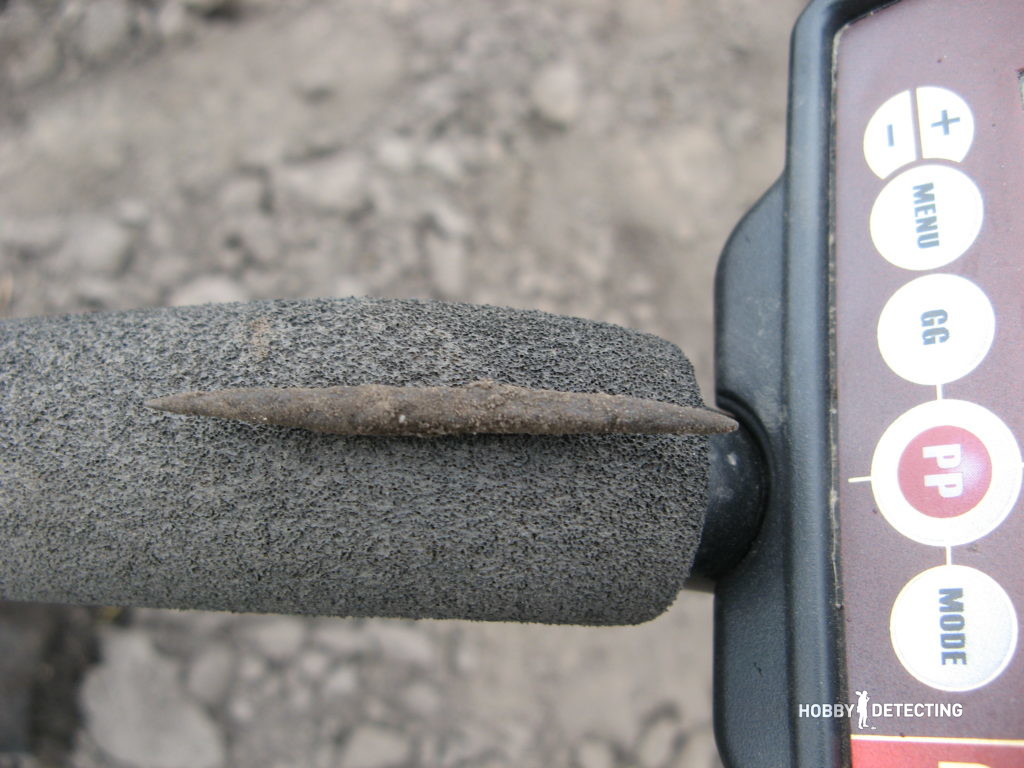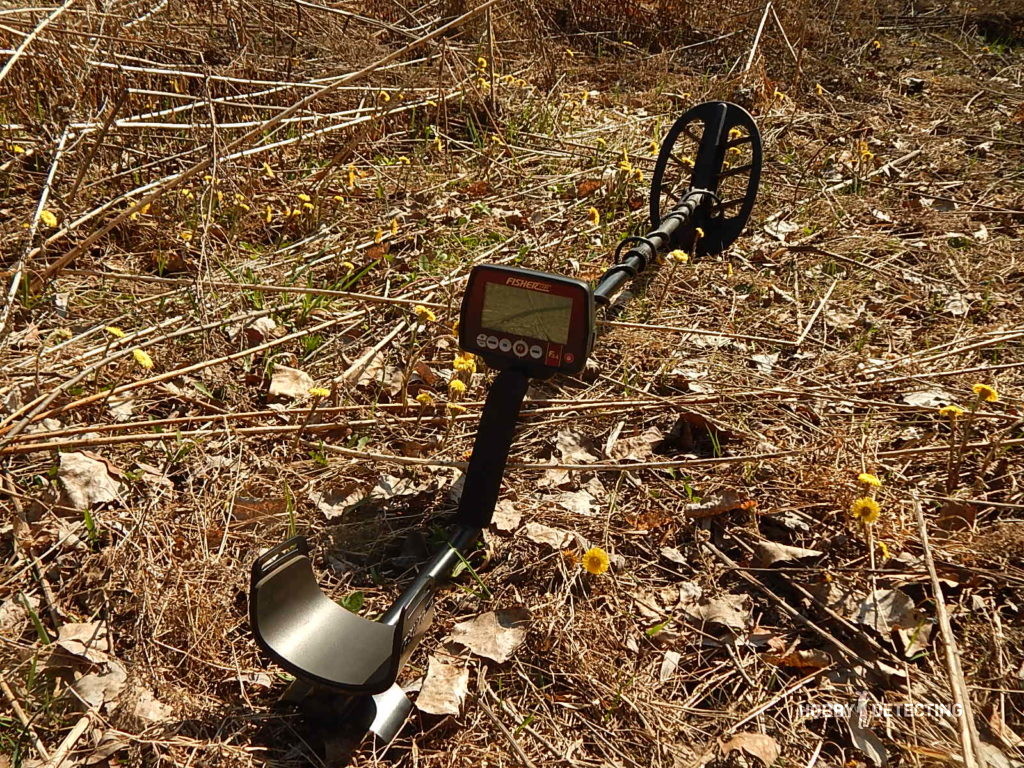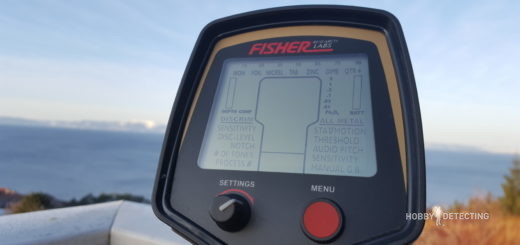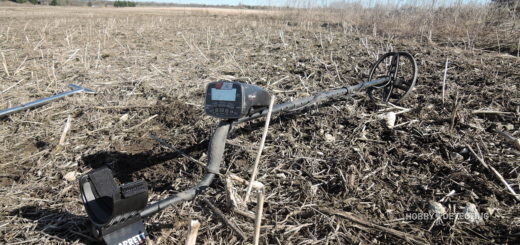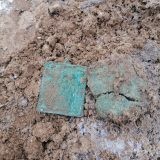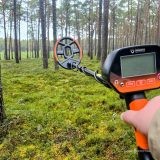Comparison and a Test of the Metal Detector Fisher F44 (Answering questions, Results, Photos+)
Making a review of the metal detector, I’ll never tell the theme of it is so that the reader does not have any questions. This is perfectly normal, some highlights for me are not important, while others stop in more detail. I am always happy to questions in the comments, in response to that, we are doing a review of a full, and most importantly, as useful as possible to others.
I have gotten some questions about the F44, so I want to answer the 3 most common questions. Briefly they are as follows: How much does the elbow rod differ from other detectors; what is the detection depth of the Ф44; how much useful is the mode A/M (all metal)? Here are three questions I will try to answer in this article.
1. The elbow rod
I liked the rod of the F44. When I first picked up the collected rod of for example the metal detector AKA eagle 5, I was very pleased. Then i compared it with the Garrett ACE, which is extremely uncomfortable because the armrest is almost in the middle of the elbow, thereby creating an additional load. With the standard coil did not feel it, but I switched to a heavier coil, and the hand fatigue would not keep itself waiting long. Therefore, it is logical to assume that the engineer of the Fisher could elbow part of the rod cut it to the appropriate size calculations, based on the small weight. Here is the F44 compared with the Eagle 5
As you can see – they are the same! The only thing that can see: The S-shaped part of the Fisher is a little higher. Why?
The distance between the armrest and the screen, believe me, it is more convenient.
But the angle of the handle and the knob on both rods are at least a little different, but this will not affect anything. So, I can’t say which one is more convenient.
Believe me, in practice it is felt that the rod of the Eagle 5 soiled more than the f 44.
I think I answered the question about the S-shaped part of the American metal detector in comparison with the AKA.
Maybe someone will be interested in comparing the plastic part of the “skeleton” of the detectors. In normal execution, it looks like this:
You will need to buy a coil protector for the Eagle 5, but this is not necessary for the Fisher F44
2. Test of the detection depth.
The Fisher 44 with 11″ coil is no worse than other detectors. But! We need a comparison. To compare this with the Eagle 5 will be quite wrong. Why? Because it has a lot of settings that affect the depth – I can overclock the eagle. So, it would be fair to take for comparison an Ace 350 or 400, but unfortunately, I do not have these detectors. So, I decided to run another test, in my opinion, very revealing and interesting. What I did:
1. Decided to hold an air test.
2. For the test, I took an ancient copper coin that I had found in the ground over a vast area. It is always interesting to find such coins, so to test with them is always interesting.
3. For the program, I chose A/M (all metal). For me (and not only) the most obscure and unknown search mode. The sensitivity is set at 18 out of 20. Putting is higher, the detector begins to buzz, but it will work. Although for the test it is no good – then no one will hear anything.
Before the test I wave piece of brick in front of the coil. If the detector had responded, then it means it would react to a heavy soil. In this case, the detector cannot be used. But, the F44 did not see the brick, and this means that the sense 18 in the mode A/M can be used in regular detecting.
The result
45 cm with an 11-inch coil on a Catherine 5 Kopeks in stable settings!
3. Mode A/M (all metal).
Let me remind you that in the mode “All Metals” reacts with one tone. The volume of this response is increased when approaching the target to the coil. The manual says that A/M is a non-selective mode. I do not quite agree, because the index number appears on the screen and it is the same as in other modes. Therefore, we can know that now is under the coil.
The above test showed that it is possible to work in the all metal mode, without fear of the clay soils. The detection depth is impressive. So – try to work only in this mode.
Here are some of the things I have found out about this A/M mode:
1. Not all objects have a VDI – if the signal is too deep, it does not show up. This is even good – it becomes clear that you now have a deep object, which, most likely, was missed by another detector. I dug such a signal, and it was a bronze find! Here is one:
2. When you work on all metals you need to look at the display all the time. This is the only way to know what is under the coil.
3. The uniqueness of A/M mode is that the soil has virtually no effect on it. Each of us has found a questionable signal. Usually, this is because, the find is too deep and the detector has difficulty classifying it. What we then do is we remove a little top soil and, voila, the response becomes much clearer. So, in the mode “All Metals” this does not work – you need to dig a hole to the diameter of the coil, to get a little closer to the object and only then, the rate of the VDI will change.
The search program A/M from Fischer is not a useless tool, like the GEO mode the X-Terra 705. That and other functions F44, undoubtedly, will be useful for detecting.
Conclusion
It seems to be all I wanted to tell you.
If you have new questions for the metal detector Fisher F44 – feel free to ask them in the comments!
In the meantime, I will be asking myself a few questions and I will answer them.
Do you need an extra coil for the Fisher 44? Yes, you do. Regular is perfect for beaches, and littered spots. I consider such options, additional coils for the F44: NEL Thunder 10,5×14,5”; NEL Storm 13×14”; NEL Attack 15” or Karma 13″ DD. I think either of those coils will give my Fisher what I need.
Is there more for me about the metal detector that has not been studied? Yes, there is. I still haven’t figured out how to set the discriminator NOTCH mode. And, I have not tried to build a customized CUSTOM mode, where it is possible to play with the volume levels of iron (FeTone)and the voice of nine sectors segment of the discriminator. Therefore, I recommend this detector to beginners who have not any difficulties in the understanding of this remarkable detector.
How long holds a charge of 2 AA batteries? Here I am really in shock. Since I bought this detector and inserted 2 new batteries, I have not changed them. On the discharge indicator, there are still 2 black boxes. I am very surprised about the low power consumption from the F44. And that’s without the headphones, I work on the external speaker, and the volume is not little, and I only turn off the detector when going home.

